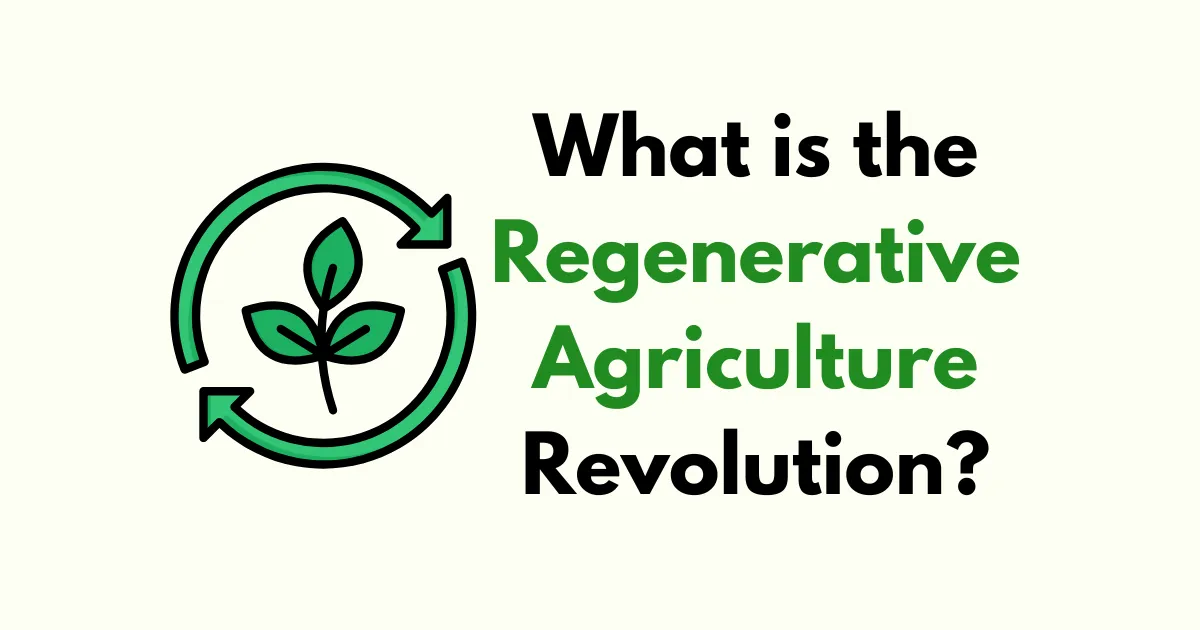In an era where climate policy zigzags like a weathervane, something unexpected is happening in American agriculture: a quiet revolution in soil science is transforming how Fortune 500 companies think about their bottom line. While politicians debate climate accords, industry giants are betting big on dirt—specifically, the kind that’s supercharged with biochar and managed through regenerative farming practices.
Emily Dakoske
“Follow the money,” says Beau Parmenter, founder of Dynamic Carbon Credits, whose company operates across 800,000 acres in 26 states. “When major manufacturers start incorporating biochar into everything from drywall to water filtration systems, you know this isn’t about politics anymore. It’s about profit and performance.”
The Soil Tech Revolution
According to the Soil Health Institute’s 2023 Economics Report, the business case for regenerative agriculture is compelling: 67% of farmers who adopted soil health systems saw increased net farm income, while 71% reported improved water-holding capacity. Even more striking, USDA data shows these practices can reduce fertilizer needs by up to 70%—a game-changer as input costs soar.
What’s different about today’s regenerative agriculture? Think of it as Farming 4.0:
- Carbon Sequestration: The IPCC’s latest data confirms that improved agricultural practices and biochar can sequester 0.9 to 3.6 metric tons of CO2 per hectare per year
- Soil Health Monitoring: USDA’s Climate-Smart Agriculture framework emphasizes measuring and verifying outcomes
- Industrial-scale Biochar Production: Dynamic Carbon Credits’ facilities output 25,000 pounds per hour and is scaling up to larger production.
- Verified Impact: Qualified carbon credits meeting international standards
The Biochar Breakthrough
Here’s where things get interesting. Dynamic Carbon Credits has developed a closed-loop system that transforms agricultural biomass into biochar. According to the International Biochar Initiative, biochar can persist in soil for hundreds to thousands of years, offering long-term carbon storage potential. A 2023 Nature study revealed that biochar-amended soils can increase water retention by up to 30%, a crucial benefit in drought-prone regions.
The market opportunities are substantial:
- Global Biochar Market: Projected to reach $4.5B by 2027 (Grand View Research)
- Carbon Credit Markets: Expected to reach $250B by 2030 (McKinsey)
- Corporate Investment in Nature-based Solutions: $7.5B in 2023
“We’re seeing major manufacturers incorporate biochar into their supply chains not because of environmental mandates, but because it improves their products,” notes Anna Jacobs, Chief Science Officer at Dynamic Carbon Credits. “When you can sequester carbon and enhance product performance simultaneously, that’s not just sustainability—that’s smart business.”
The Scale Play
Dynamic is all in on expanding their footprint. Currently they operate across 26 states with over 800,000 acres under management. That is just the beginning as they strategically establish production around the United States. Dynamic Carbon Credits demonstrates how regenerative agriculture can scale. Their system:
- Utilizes proprietary deep-rooted crops for carbon sequestration
- Implements USDA-verified soil testing protocols
- Produces industrial-grade biochar
- Generates quality carbon credits
For corporations grappling with Scope 3 emissions, which the EPA notes typically account for 70-90% of a business’s carbon footprint—this provides a verified pathway to reduction that doesn’t rely on government incentives or international agreements.
The Market Response
Major corporations are taking notice. The Science Based Targets initiative reports that over 4,200 companies are now committed to net-zero emissions, creating unprecedented demand for verified carbon reduction solutions. This surge in corporate commitments has driven a 300% increase in demand for high-quality carbon credits since 2020.
The Bottom Line
While Washington’s stance on climate policy may fluctuate, the market for regenerative agriculture solutions continues to grow. USDA’s Climate-Smart Agriculture and Forestry Strategy identifies regenerative practices as key to both agricultural resilience and climate mitigation. Dynamic Carbon Credits’ approach—combining advanced crop science, industrial-scale biochar production, and verified carbon credit offers a blueprint for how companies can profit from environmental solutions, regardless of the political climate.
For corporations looking to future-proof their operations, the message is clear: the next industrial revolution isn’t happening in Silicon Valley—it’s happening in our soil.
Engage with Dynamic Carbon Credits to learn how you can work with nature to meet your goals, contact us.






